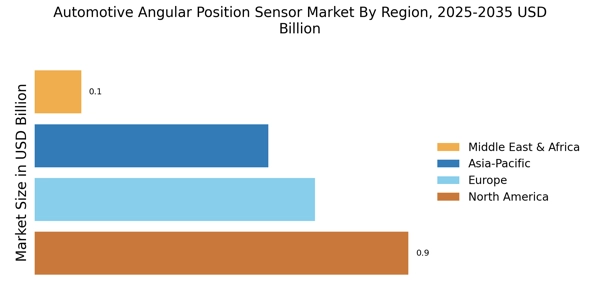The Automotive Angular Position Sensor Market has witnessed significant growth driven by the increasing demand for advanced automotive technologies. This market encompasses a variety of sensors that play crucial roles in improving vehicle performance, enhancing safety features, and enabling the execution of essential functions such as electronic stability control and adaptive cruise control.
Competitors in this market are leveraging innovations in technology to offer high-precision sensors that optimize vehicle dynamics and ensure safety. Factors such as regulatory pressures for improved vehicle emission and safety regulations, along with the rising trend of electric and hybrid vehicles, are pushing manufacturers to develop more sophisticated angular position sensors.
As competition intensifies, players in this market are focusing on strategies such as partnerships, collaborations, and technological advancements to solidify their market presence and maintain growth in a dynamic and evolving landscape.
Vishay Intertechnology has established itself as a formidable player in the Automotive Angular Position Sensor Market, recognized for its strong technical expertise and comprehensive product portfolio.
The company offers a broad range of both contact and non-contact angle sensing solutions, leveraging advanced technologies that cater to various automotive applications. Vishay's commitment to quality is reflected in its rigorous testing processes and adherence to industry standards, which ensures reliable performance even in the most challenging automotive environments.
Furthermore, the company's ability to rapidly respond to market demands through its extensive research and development capabilities enhances its competitive edge, making it a preferred supplier for many automotive manufacturers looking to integrate high-performance sensors into their vehicles.
STMicroelectronics is a prominent competitor within the Automotive Angular Position Sensor Market, known for its innovation and cutting-edge technology. The company specializes in producing highly reliable and accurate angular position sensors that facilitate advanced automotive applications, including electronic control units and driver assistance systems.
STMicroelectronics employs state-of-the-art manufacturing techniques and invests heavily in research and development to maintain its position at the forefront of the automotive sensor market. The company also emphasizes its reach, ensuring a solid distribution network that meets the diverse needs of clients around the world.
With a focus on energy efficiency and integration capabilities, STMicroelectronics continues to enhance its offerings, supporting the automotive industry's transition towards smarter, more connected vehicles while reinforcing its reputation as a leading manufacturer in the sector.

















Leave a Comment